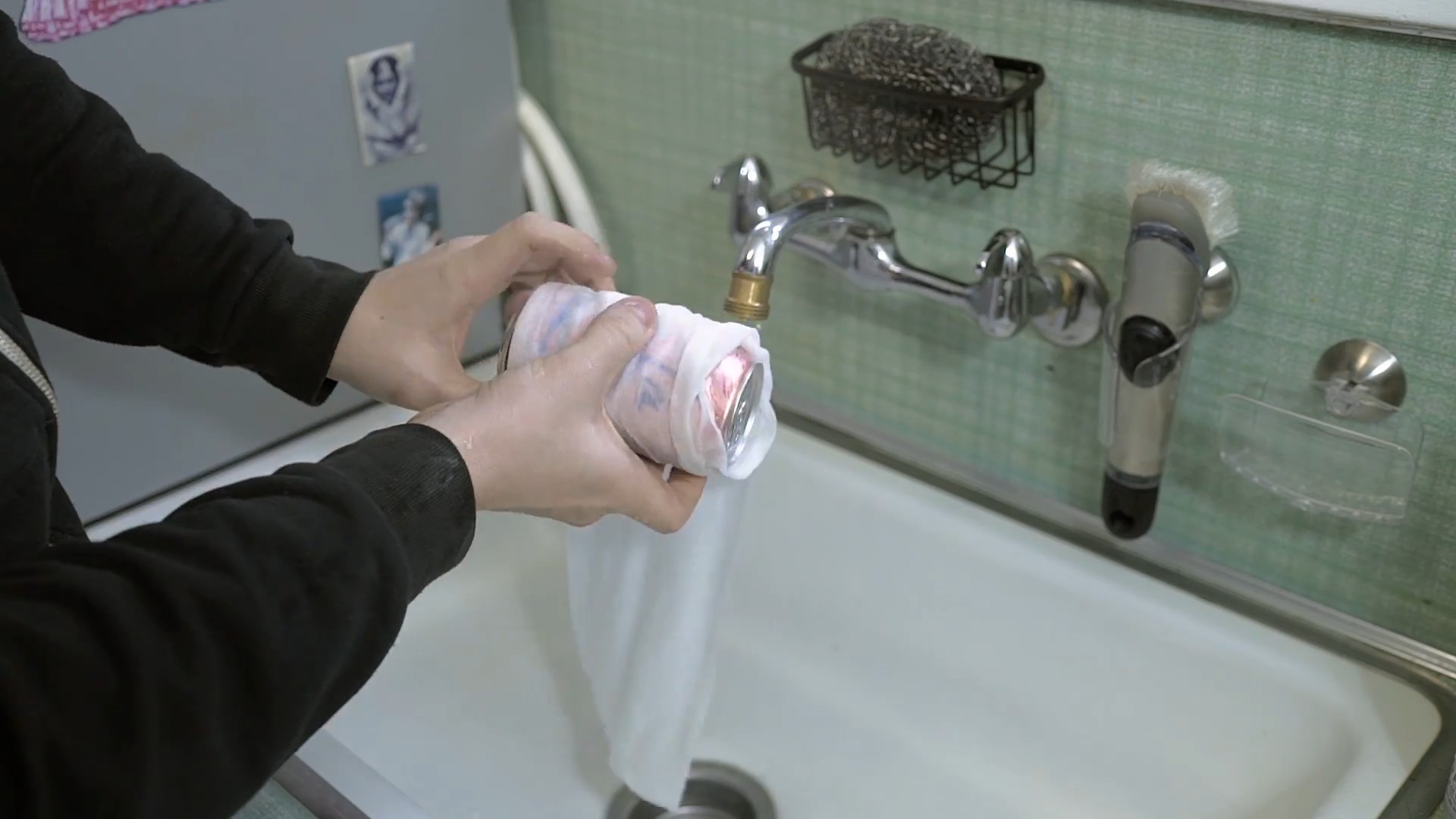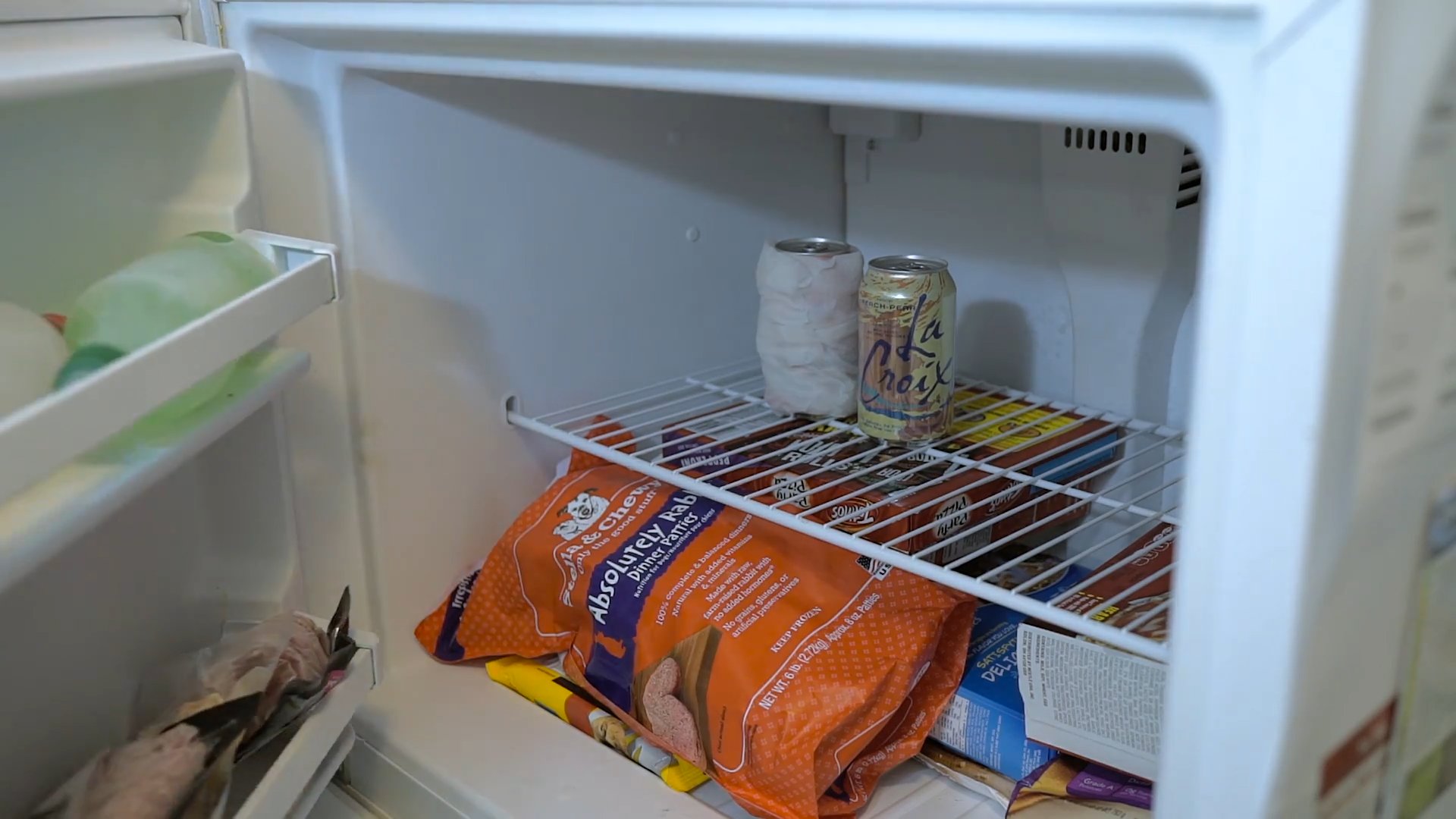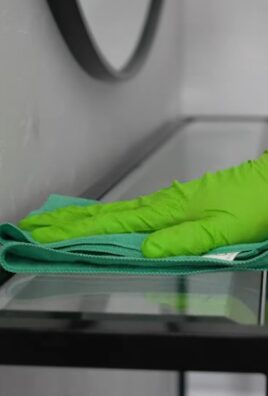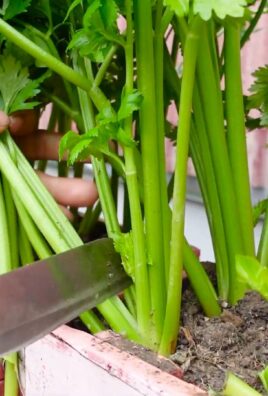Paper Towel Tricks and Hacks: Who knew these everyday household heroes could be so much more than just spill clean-up crew? I’m constantly amazed by the hidden potential lurking in the simplest of things, and paper towels are no exception! Forget just wiping counters; we’re diving deep into a world of clever DIY solutions that will save you time, money, and maybe even a little bit of sanity.
While paper towels might seem like a modern convenience, the concept of using absorbent paper for cleaning and hygiene has roots stretching back centuries. From ancient China’s rice paper to the evolution of mass-produced paper products, we’ve always sought efficient ways to manage messes. Now, we’re taking that efficiency to a whole new level!
Let’s face it, life gets messy. And sometimes, the solutions we need are right under our noses – or, in this case, in our pantry. That’s why I’m so excited to share these incredible paper towel tricks and hacks. Whether you’re looking to extend the life of your produce, create a makeshift humidifier, or even remove stubborn stains, these simple techniques will transform the way you think about this humble household staple. Get ready to unlock the surprising power of paper towels and make your life a little bit easier, one sheet at a time!

Unlocking the Unexpected: Paper Towel Hacks You Need to Know
Hey there, fellow DIY enthusiast! I’m always on the lookout for clever ways to simplify life, and let me tell you, the humble paper towel is a secret weapon. Forget just wiping up spills; these absorbent wonders can do so much more! I’m going to share some of my favorite paper towel hacks that will save you time, money, and maybe even a little sanity.
Hack 1: Reviving Limp Lettuce
Is your lettuce looking a little sad and wilted? Don’t toss it! This trick works wonders.
What you’ll need:
* Limp lettuce
* Paper towels
* Large bowl or container
* Cold water
Step-by-step instructions:
1. Prepare the Lettuce: Gently separate the lettuce leaves and rinse them under cold water to remove any dirt or debris.
2. Wrap in Paper Towels: Lightly dampen a few paper towels. You don’t want them soaking wet, just slightly moist. Wrap the lettuce leaves loosely in the damp paper towels.
3. Chill Out: Place the wrapped lettuce in a large bowl or container. Cover the bowl with plastic wrap or a lid.
4. Refrigerate: Pop the bowl into the refrigerator for at least 30 minutes, or even better, a couple of hours. The cold and moisture will help rehydrate the lettuce leaves.
5. Enjoy Your Crisp Lettuce: Remove the lettuce from the refrigerator, unwrap it from the paper towels, and behold – crisp, revived lettuce!
Why this works: The damp paper towels provide a humid environment that helps the lettuce reabsorb moisture, bringing it back to life.
Hack 2: Keeping Herbs Fresh Longer
Fresh herbs add so much flavor to cooking, but they can wilt quickly. Here’s how to extend their lifespan.
What you’ll need:
* Fresh herbs (basil, parsley, cilantro, etc.)
* Paper towels
* Plastic bag or airtight container
Step-by-step instructions:
1. Prepare the Herbs: Gently rinse the herbs under cold water and pat them dry with a paper towel. Remove any damaged or yellowing leaves.
2. Wrap in Paper Towels: Lightly dampen a paper towel. Wrap the herbs loosely in the damp paper towel.
3. Store Properly: Place the wrapped herbs in a plastic bag or airtight container.
4. Refrigerate: Store the bag or container in the refrigerator.
5. Replace Paper Towel: Check the paper towel every few days and replace it with a fresh, damp one if it becomes dry.
Why this works: The damp paper towel provides moisture to keep the herbs hydrated, while the plastic bag or container prevents them from drying out too quickly.
Hack 3: Cleaning Microwave Splatters
Microwave messes are the worst! This hack makes cleaning them a breeze.
What you’ll need:
* Paper towels
* Water
* Microwave-safe bowl
Step-by-step instructions:
1. Prepare the Solution: Fill a microwave-safe bowl with about one cup of water.
2. Soak the Paper Towel: Soak a paper towel in the water, then wring it out so it’s damp but not dripping.
3. Microwave Magic: Place the damp paper towel inside the microwave.
4. Steam Clean: Microwave on high for 3-5 minutes. The water will create steam that loosens the splatters.
5. Wipe Away: Carefully remove the bowl (it will be hot!). Use the same damp paper towel to wipe down the inside of the microwave. The splatters should come off easily.
Why this works: The steam softens the dried-on food, making it much easier to wipe away without harsh chemicals or scrubbing.
Hack 4: Polishing Chrome Fixtures
Want to give your chrome fixtures a sparkling shine? Paper towels can help!
What you’ll need:
* Paper towels
* White vinegar or glass cleaner
Step-by-step instructions:
1. Apply Cleaner: Spray white vinegar or glass cleaner onto a paper towel.
2. Wipe Down Fixtures: Wipe down the chrome fixtures with the damp paper towel, paying attention to any water spots or smudges.
3. Buff to Shine: Use a clean, dry paper towel to buff the fixtures until they shine.
Why this works: The paper towel provides a gentle abrasive surface that helps remove water spots and grime, while the vinegar or glass cleaner helps dissolve any buildup.
Hack 5: Testing Seed Germination
If you’re a gardener like me, you know the importance of testing seeds before planting. This simple hack uses paper towels to check germination rates.
What you’ll need:
* Seeds
* Paper towels
* Plastic bag or container
* Water
Step-by-step instructions:
1. Dampen Paper Towels: Moisten a paper towel with water. You want it damp, not soaking wet.
2. Place Seeds: Spread the seeds evenly on one half of the damp paper towel.
3. Fold and Seal: Fold the other half of the paper towel over the seeds. Place the folded paper towel in a plastic bag or container.
4. Warm Location: Place the bag or container in a warm location, away from direct sunlight.
5. Check for Germination: Check the seeds daily. Keep the paper towel moist by adding a little water if needed.
6. Count Germinated Seeds: After a few days (depending on the type of seed), count the number of seeds that have sprouted. This will give you an idea of the germination rate.
Why this works: The damp paper towel provides a moist environment that encourages the seeds to germinate. The plastic bag or container helps retain moisture.
Hack 6: Removing Candle Wax
Accidentally dripped candle wax on your furniture? Don’t panic!
What you’ll need:
* Paper towels
* Iron
Step-by-step instructions:
1. Place Paper Towel: Place a paper towel over the candle wax.
2. Ironing Time: Set your iron to a low setting (no steam!). Gently iron over the paper towel. The heat will melt the wax, and the paper towel will absorb it.
3. Repeat if Necessary: Repeat the process with a clean section of the paper towel until all the wax is removed.
Why this works: The heat from the iron melts the wax, allowing it to be absorbed by the paper towel.
Hack 7: Softening Brown Sugar
Hard as a rock brown sugar? I’ve been there! This hack is a lifesaver.
What you’ll need:
* Hard brown sugar
* Paper towel
* Water
* Microwave-safe bowl
Step-by-step instructions:
1. Dampen Paper Towel: Lightly dampen a paper towel with water. Wring out any excess water.
2. Place in Bowl: Place the brown sugar in a microwave-safe bowl.
3. Cover with Paper Towel: Place the damp paper towel on top of the brown sugar.
4. Microwave: Microwave on high for 20-30 seconds.
5. Check and Repeat: Check the brown sugar. If it’s still hard, microwave for another 10-15 seconds.
6. Break it Up: Once softened, break up any clumps with a fork.
Why this works: The moisture from the paper towel is absorbed by the brown sugar, softening it.
Hack 8: Cleaning Cast Iron Skillets
Cleaning cast iron can be tricky, but paper towels can help maintain the seasoning.
What you’ll need:
* Paper towels
* Cooking oil (vegetable, canola, or flaxseed)
Step-by-step instructions:
1. Clean After Use: After cooking, scrape out any food particles from the skillet.
2. Apply Oil: Pour a small amount of cooking oil into the skillet.
3. Wipe Down: Use a paper towel to wipe the oil all over the inside of the skillet, ensuring every surface is coated.
4. Remove Excess Oil: Use a clean paper towel to wipe away any excess oil. You want a thin, even layer.
5. Heat it Up: Place the skillet on the stovetop over low heat for a few minutes, or in a warm oven, to help the oil absorb into the iron.
Why this works: The oil helps prevent rust and maintains the seasoning of the cast iron skillet. The paper towel

Conclusion
So, there you have it! These paper towel tricks and hacks are more than just clever ideas; they’re game-changers for your kitchen, your cleaning routine, and even your crafting projects. We’ve explored how these humble sheets of absorbent paper can be elevated from simple spills to sophisticated solutions. From extending the life of your leafy greens to creating custom cleaning wipes, the versatility of the paper towel is truly remarkable.
Why is this a must-try? Because it simplifies your life, saves you money, and reduces waste. Think about it: instead of buying expensive produce-saving containers, a simple paper towel nestled in your crisper drawer can keep your lettuce crisp and your herbs fresh for days longer. Instead of reaching for harsh chemical cleaners, a DIY paper towel wipe infused with vinegar and essential oils can tackle grime and leave your home smelling divine. And instead of tossing out that slightly damaged roll, you can repurpose it for creative projects or even as a makeshift plant starter.
But the real magic lies in the adaptability of these techniques. Feel free to experiment with variations to suit your specific needs and preferences. For instance, if you’re using the paper towel to line your frying pan, consider dampening it slightly to prevent sticking. If you’re creating DIY cleaning wipes, try different essential oil blends to find your favorite scent. Lavender and tea tree oil are great for disinfecting, while lemon and orange offer a refreshing citrus boost. You can even use different types of paper towels depending on the task at hand. Thicker, more absorbent towels are ideal for cleaning up spills, while thinner, less expensive towels are perfect for lining drawers or wrapping delicate items.
The possibilities are endless, and that’s what makes these paper towel tricks so compelling. They’re not just about following instructions; they’re about unleashing your creativity and finding new and innovative ways to use a common household item.
Don’t underestimate the power of a simple paper towel! It’s a versatile tool that can make your life easier, more efficient, and more enjoyable. We encourage you to try these tricks and hacks for yourself and see the difference they can make.
And most importantly, we want to hear about your experiences! Did you discover a new and ingenious way to use a paper towel? Did one of these tricks save you time, money, or frustration? Share your stories, tips, and variations in the comments below. Let’s create a community of paper towel enthusiasts and unlock the full potential of this everyday essential. Let us know how you are using these paper towel tricks in your daily life.
Frequently Asked Questions (FAQ)
1. What type of paper towel works best for these tricks?
The best type of paper towel depends on the specific trick you’re trying. For general cleaning and spill cleanup, a thicker, more absorbent paper towel is ideal. These are typically more expensive but offer superior performance and durability. For tasks like lining drawers, wrapping delicate items, or using as a coffee filter substitute, a thinner, less expensive paper towel will suffice. When making DIY cleaning wipes, consider using a durable, lint-free paper towel to prevent leaving behind residue. Experiment with different brands and types to find what works best for your needs and budget.
2. Are these paper towel tricks environmentally friendly?
While paper towels are convenient, they’re not the most environmentally friendly option. To minimize your environmental impact, consider using reusable alternatives whenever possible. For example, instead of using paper towels to clean up spills, opt for reusable cloths or sponges. When storing produce, consider using reusable produce bags or containers. If you do use paper towels, look for brands that are made from recycled materials or that are sustainably sourced. You can also compost used paper towels, as long as they haven’t been used to clean up harsh chemicals or greasy messes. Another option is to cut paper towels in half or use smaller sheets to reduce waste.
3. Can I use these paper towel tricks with other types of absorbent paper, like shop towels?
Yes, many of these tricks can be adapted for use with other types of absorbent paper, such as shop towels or even reusable microfiber cloths. Shop towels are typically more durable and absorbent than paper towels, making them a good choice for heavy-duty cleaning tasks. Microfiber cloths are a reusable and eco-friendly alternative to paper towels, and they can be washed and reused multiple times. When using alternative materials, be sure to adjust the techniques as needed to achieve the desired results. For example, you may need to use more or less liquid when making DIY cleaning wipes, or you may need to use a different folding technique when storing produce.
4. How do I prevent paper towels from leaving lint behind when cleaning?
Linting can be a common problem when using paper towels for cleaning, especially on delicate surfaces like glass or mirrors. To minimize linting, choose a lint-free paper towel or use a microfiber cloth instead. You can also dampen the paper towel slightly before using it, as this can help to reduce linting. Avoid using excessive pressure when wiping, as this can also contribute to linting. If you do notice lint, try using a clean, dry cloth to buff the surface.
5. Are there any safety precautions I should take when using paper towels for cleaning?
Yes, it’s important to take certain safety precautions when using paper towels for cleaning, especially when working with chemicals or cleaning solutions. Always wear gloves to protect your hands from irritation or chemical burns. Avoid mixing different cleaning products, as this can create dangerous fumes. Be sure to ventilate the area well when cleaning, and never leave cleaning products unattended. When cleaning up spills, be sure to absorb the liquid completely and dispose of the paper towels properly. If you’re cleaning up hazardous materials, such as blood or bodily fluids, wear appropriate personal protective equipment and follow proper disposal procedures.
6. How can I make my own DIY paper towel dispenser?
Creating your own DIY paper towel dispenser can be a fun and practical project. There are many different ways to make a dispenser, depending on your skills and available materials. One simple option is to repurpose an old tissue box or cereal box. Simply cut a hole in the top of the box and insert a roll of paper towels. You can also create a more elaborate dispenser using wood, metal, or plastic. There are many tutorials available online that provide step-by-step instructions for building a paper towel dispenser. Be sure to choose a design that is sturdy, functional, and aesthetically pleasing.
7. Can I use paper towels to remove stains from clothing?
Yes, paper towels can be helpful in removing certain types of stains from clothing, especially when used immediately after the stain occurs. Blot the stain with a clean paper towel to absorb as much of the liquid as possible. Avoid rubbing the stain, as this can spread it and make it more difficult to remove. Once you’ve blotted the stain, you can try using a stain remover or washing the garment according to the care instructions. For stubborn stains, you may need to repeat the process or seek professional cleaning assistance.
8. How can I store paper towels to keep them fresh and dry?
To keep your paper towels fresh and dry, store them in a cool, dry place away from moisture and humidity. Avoid storing them near sources of heat or direct sunlight, as this can cause them to dry out or become discolored. If you live in a humid climate, consider storing your paper towels in an airtight container or bag to prevent them from absorbing moisture. You can also add a desiccant packet to the container to help absorb any excess moisture.
9. What are some creative ways to repurpose used paper towels?
Even after they’ve been used, paper towels can still be repurposed for a variety of creative projects. You can use them to create textured artwork, make papier-mâché sculptures, or even start seedlings for your garden. Used paper towels can also be shredded and added to your compost pile, as long as they haven’t been used to clean up harsh chemicals or greasy messes. Get creative and see what other ways you can find to repurpose used paper towels instead of throwing them away.
10. Where can I find more ideas for paper towel tricks and hacks?
There are many resources available online and in print that offer additional ideas for paper towel tricks and hacks. You can search online for articles, videos, and blog posts that provide step-by-step instructions and inspiration. You can also find books and magazines that feature cleaning tips, household hacks, and DIY projects. Don’t be afraid to experiment and come up with your own unique paper towel tricks! The possibilities are endless.




Leave a Comment